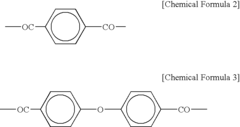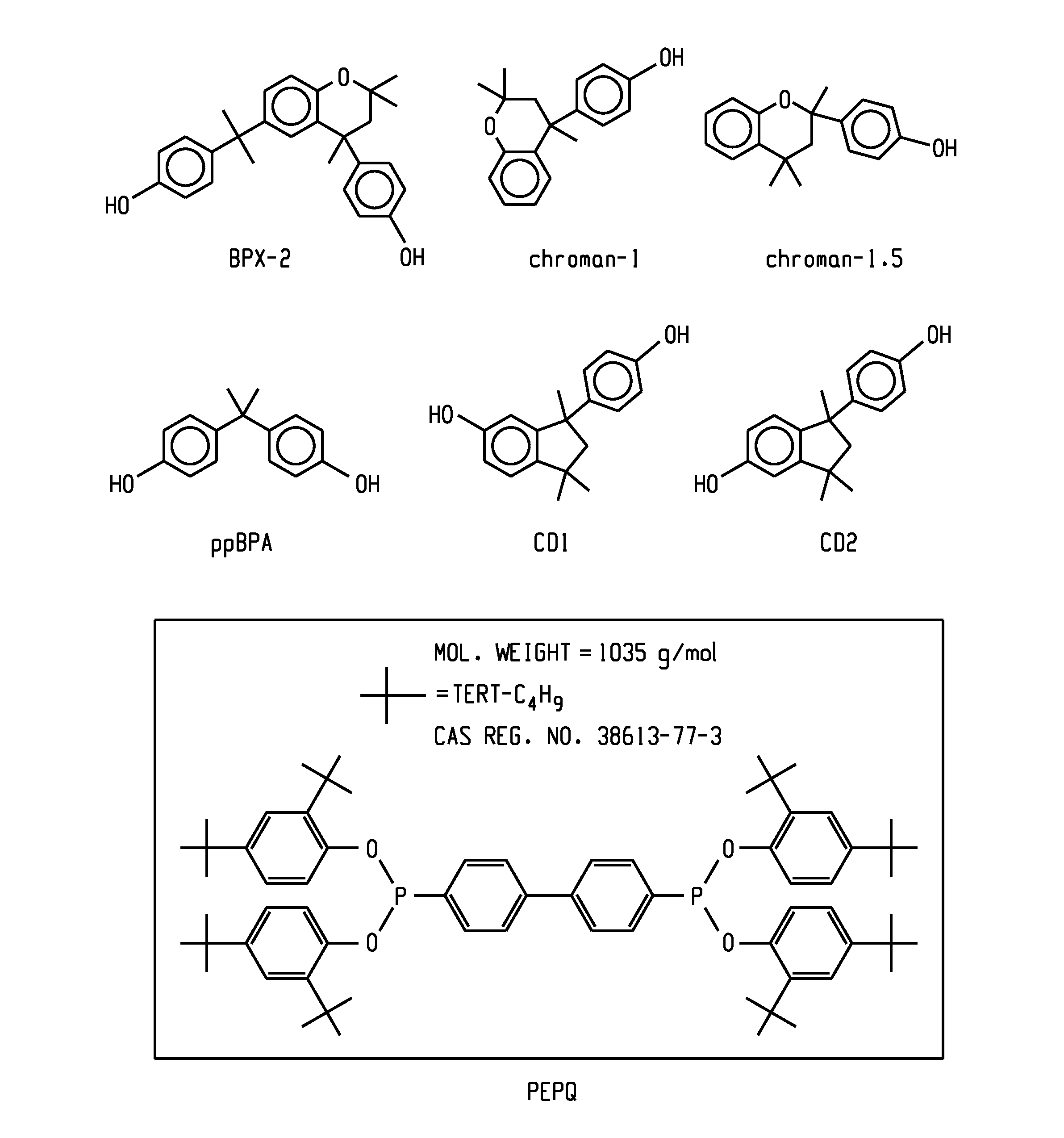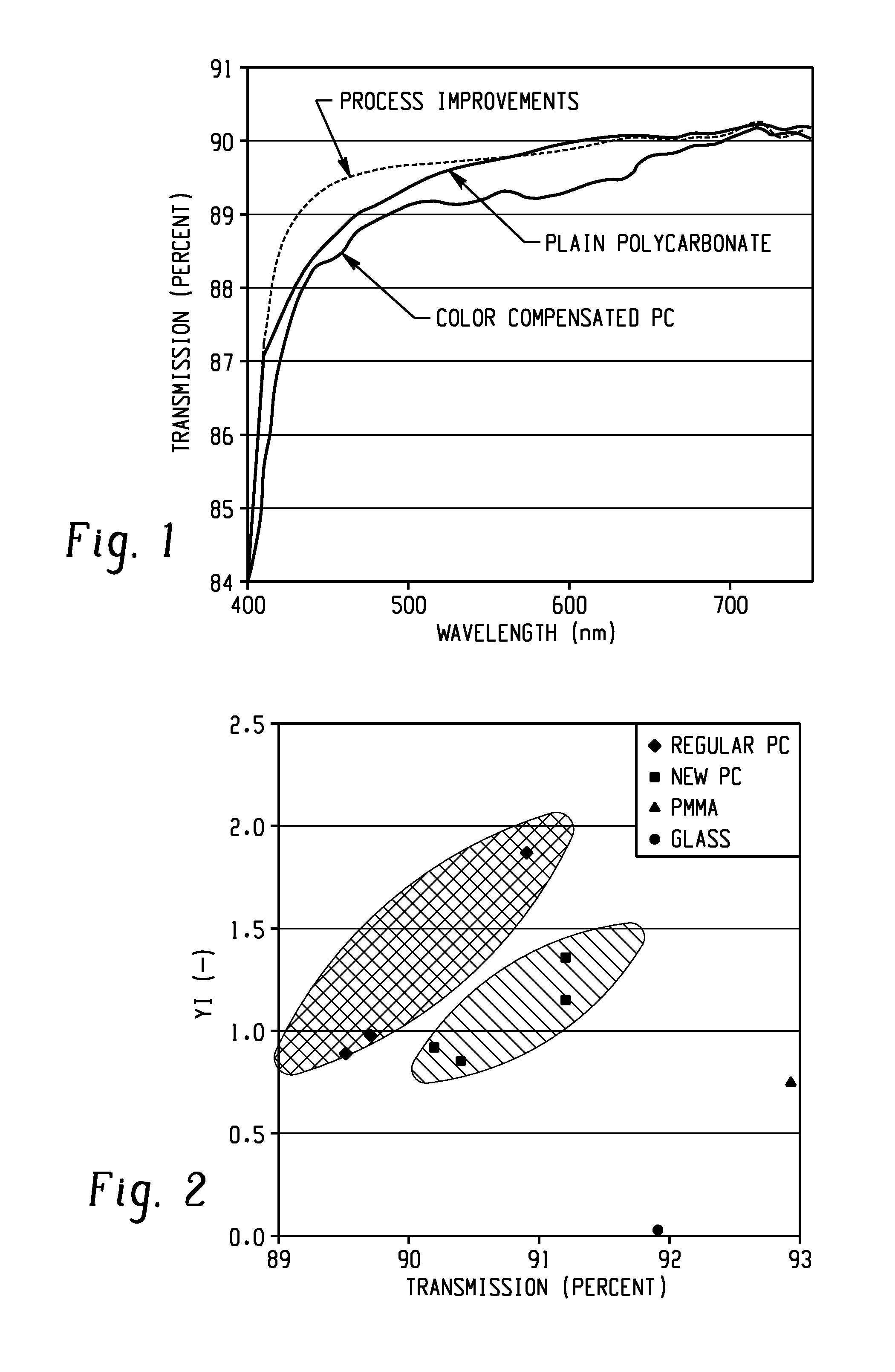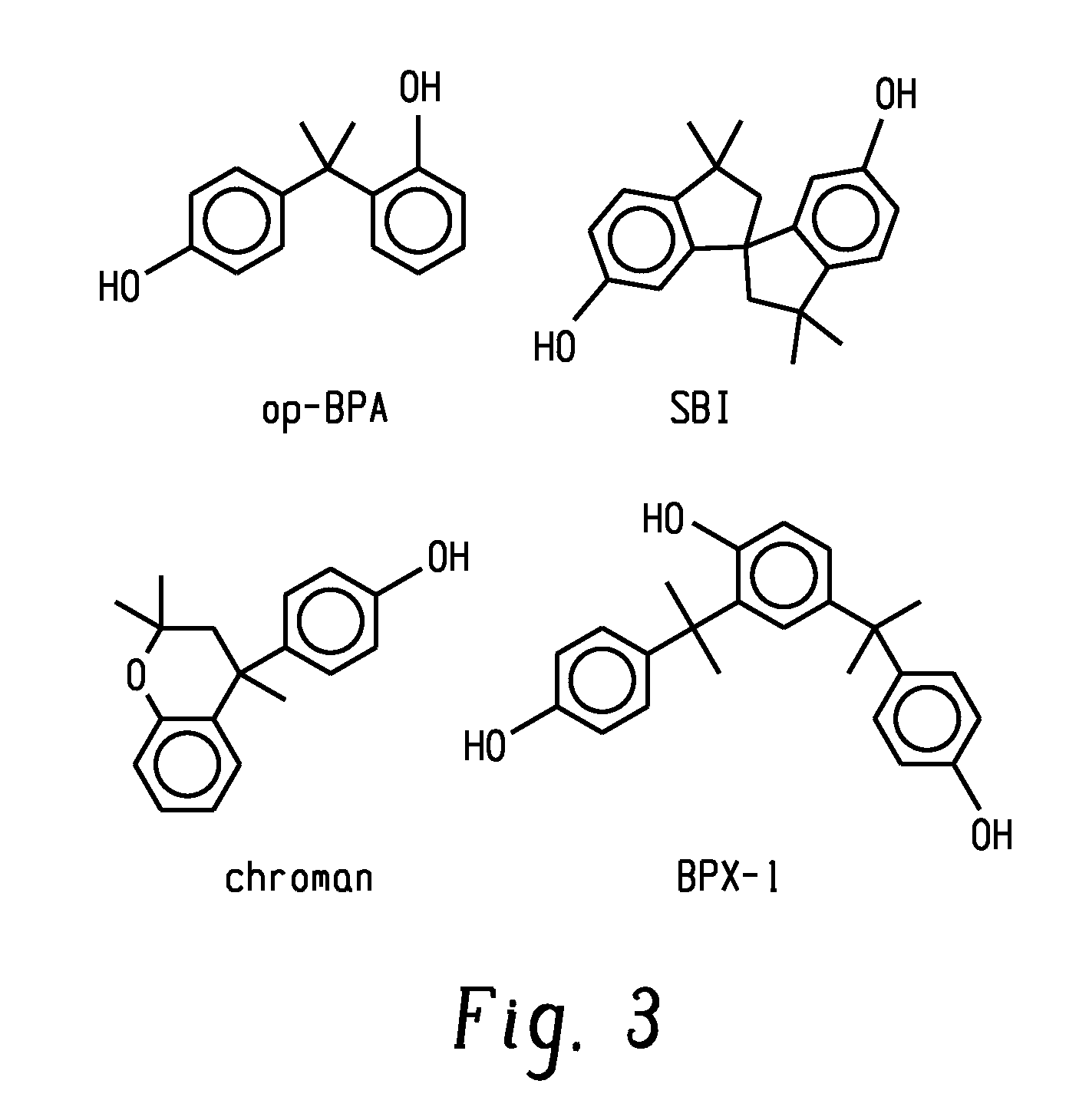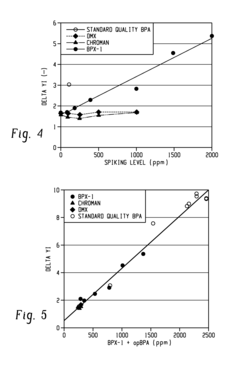Polycarbonate in Electronics: A Material Evolution
JUL 1, 20259 MIN READ
Generate Your Research Report Instantly with AI Agent
Patsnap Eureka helps you evaluate technical feasibility & market potential.
Polycarbonate Evolution
Polycarbonate has undergone a remarkable evolution in the electronics industry since its introduction in the 1950s. Initially developed as a durable, transparent plastic, polycarbonate quickly found its way into various applications due to its unique combination of properties. In the early stages of its adoption in electronics, polycarbonate was primarily used for simple components like housings and protective covers.
As electronic devices became more complex and miniaturized, the demands on materials increased. Polycarbonate's evolution in response to these challenges can be traced through several key phases. In the 1970s and 1980s, manufacturers began to explore modified versions of polycarbonate, incorporating additives to enhance specific properties such as flame retardancy and impact resistance. This period saw the material's use expand into more critical components of electronic devices.
The 1990s marked a significant leap in polycarbonate technology with the development of blends and composites. By combining polycarbonate with other polymers or reinforcing materials, engineers created new grades that offered improved heat resistance, dimensional stability, and electrical properties. These advancements enabled polycarbonate to be used in more demanding applications within electronic devices, including internal structural components and circuit board substrates.
The turn of the millennium brought about a focus on sustainability and environmental concerns. This led to the development of bio-based and recycled polycarbonate variants, addressing the growing demand for eco-friendly materials in electronics. Simultaneously, nanotechnology began to play a role in polycarbonate evolution, with the incorporation of nanoparticles to enhance properties such as conductivity and thermal management.
In recent years, the evolution of polycarbonate has been driven by the needs of emerging technologies. The material has been adapted to meet the requirements of flexible electronics, wearable devices, and advanced display technologies. High-performance grades of polycarbonate now offer exceptional optical clarity, UV resistance, and the ability to withstand complex manufacturing processes such as in-mold decoration and laser marking.
The ongoing evolution of polycarbonate in electronics is characterized by a continuous push towards thinner, lighter, and more functional materials. Research is currently focused on developing polycarbonate formulations with enhanced thermal conductivity, improved electromagnetic shielding properties, and even self-healing capabilities. As the electronics industry continues to innovate, polycarbonate is expected to evolve further, maintaining its position as a crucial material in the design and manufacture of cutting-edge electronic devices.
As electronic devices became more complex and miniaturized, the demands on materials increased. Polycarbonate's evolution in response to these challenges can be traced through several key phases. In the 1970s and 1980s, manufacturers began to explore modified versions of polycarbonate, incorporating additives to enhance specific properties such as flame retardancy and impact resistance. This period saw the material's use expand into more critical components of electronic devices.
The 1990s marked a significant leap in polycarbonate technology with the development of blends and composites. By combining polycarbonate with other polymers or reinforcing materials, engineers created new grades that offered improved heat resistance, dimensional stability, and electrical properties. These advancements enabled polycarbonate to be used in more demanding applications within electronic devices, including internal structural components and circuit board substrates.
The turn of the millennium brought about a focus on sustainability and environmental concerns. This led to the development of bio-based and recycled polycarbonate variants, addressing the growing demand for eco-friendly materials in electronics. Simultaneously, nanotechnology began to play a role in polycarbonate evolution, with the incorporation of nanoparticles to enhance properties such as conductivity and thermal management.
In recent years, the evolution of polycarbonate has been driven by the needs of emerging technologies. The material has been adapted to meet the requirements of flexible electronics, wearable devices, and advanced display technologies. High-performance grades of polycarbonate now offer exceptional optical clarity, UV resistance, and the ability to withstand complex manufacturing processes such as in-mold decoration and laser marking.
The ongoing evolution of polycarbonate in electronics is characterized by a continuous push towards thinner, lighter, and more functional materials. Research is currently focused on developing polycarbonate formulations with enhanced thermal conductivity, improved electromagnetic shielding properties, and even self-healing capabilities. As the electronics industry continues to innovate, polycarbonate is expected to evolve further, maintaining its position as a crucial material in the design and manufacture of cutting-edge electronic devices.
Market Demand Analysis
The market demand for polycarbonate in electronics has been experiencing significant growth, driven by the material's unique properties and the evolving needs of the electronics industry. Polycarbonate's exceptional combination of durability, heat resistance, electrical insulation, and optical clarity has positioned it as a crucial material in various electronic applications.
In the consumer electronics sector, polycarbonate has become indispensable for smartphone and tablet casings, laptop bodies, and wearable devices. The material's ability to withstand impact and its lightweight nature make it ideal for portable electronic devices. As the demand for thinner, lighter, and more durable devices continues to rise, the market for polycarbonate in this segment is expected to expand further.
The automotive electronics market has also been a significant driver of polycarbonate demand. With the increasing integration of electronic components in vehicles, from infotainment systems to advanced driver assistance systems (ADAS), polycarbonate's heat resistance and electrical insulation properties have made it a preferred material for housings and connectors. The growth of electric vehicles and autonomous driving technologies is likely to further boost the demand for polycarbonate in automotive electronics.
In the field of lighting and optics, polycarbonate's optical clarity and moldability have led to its widespread use in LED housings, lenses, and light guides. The global shift towards energy-efficient lighting solutions has created a sustained demand for polycarbonate in this sector. Additionally, the material's UV resistance makes it suitable for outdoor electronic displays and signage, further expanding its market potential.
The telecommunications industry has also contributed to the growing demand for polycarbonate. The material is extensively used in the production of fiber optic connectors, antenna housings, and other components critical to 5G infrastructure. As 5G networks continue to expand globally, the demand for polycarbonate in this sector is expected to see substantial growth.
The medical electronics market represents another area of significant potential for polycarbonate. Its biocompatibility and sterilization resistance make it suitable for medical device housings, diagnostic equipment, and wearable health monitors. The increasing focus on telemedicine and remote patient monitoring is likely to drive further demand in this segment.
While the overall market trend for polycarbonate in electronics is positive, it is important to note that the industry faces challenges related to sustainability and recycling. As environmental concerns grow, there is an increasing demand for more eco-friendly alternatives or improved recycling methods for polycarbonate. This trend may influence future market dynamics and drive innovation in material science and recycling technologies.
In the consumer electronics sector, polycarbonate has become indispensable for smartphone and tablet casings, laptop bodies, and wearable devices. The material's ability to withstand impact and its lightweight nature make it ideal for portable electronic devices. As the demand for thinner, lighter, and more durable devices continues to rise, the market for polycarbonate in this segment is expected to expand further.
The automotive electronics market has also been a significant driver of polycarbonate demand. With the increasing integration of electronic components in vehicles, from infotainment systems to advanced driver assistance systems (ADAS), polycarbonate's heat resistance and electrical insulation properties have made it a preferred material for housings and connectors. The growth of electric vehicles and autonomous driving technologies is likely to further boost the demand for polycarbonate in automotive electronics.
In the field of lighting and optics, polycarbonate's optical clarity and moldability have led to its widespread use in LED housings, lenses, and light guides. The global shift towards energy-efficient lighting solutions has created a sustained demand for polycarbonate in this sector. Additionally, the material's UV resistance makes it suitable for outdoor electronic displays and signage, further expanding its market potential.
The telecommunications industry has also contributed to the growing demand for polycarbonate. The material is extensively used in the production of fiber optic connectors, antenna housings, and other components critical to 5G infrastructure. As 5G networks continue to expand globally, the demand for polycarbonate in this sector is expected to see substantial growth.
The medical electronics market represents another area of significant potential for polycarbonate. Its biocompatibility and sterilization resistance make it suitable for medical device housings, diagnostic equipment, and wearable health monitors. The increasing focus on telemedicine and remote patient monitoring is likely to drive further demand in this segment.
While the overall market trend for polycarbonate in electronics is positive, it is important to note that the industry faces challenges related to sustainability and recycling. As environmental concerns grow, there is an increasing demand for more eco-friendly alternatives or improved recycling methods for polycarbonate. This trend may influence future market dynamics and drive innovation in material science and recycling technologies.
Technical Challenges
Polycarbonate, a versatile thermoplastic polymer, has been widely used in electronics for decades. However, as the industry evolves, several technical challenges have emerged, necessitating further innovation and development in this material.
One of the primary challenges facing polycarbonate in electronics is its thermal management properties. As electronic devices become more powerful and compact, heat dissipation becomes increasingly critical. While polycarbonate offers good electrical insulation, its thermal conductivity is relatively low compared to metals or ceramics. This limitation can lead to overheating issues in densely packed electronic components, potentially compromising performance and longevity.
Another significant challenge is the material's susceptibility to environmental stress cracking. When exposed to certain chemicals or under prolonged stress, polycarbonate can develop microscopic cracks, which can compromise the structural integrity of electronic enclosures or components. This issue is particularly problematic in portable devices that are frequently exposed to various environmental conditions and physical stresses.
The growing demand for sustainable and eco-friendly materials presents another hurdle for polycarbonate in electronics. Traditional polycarbonate production relies on bisphenol A (BPA), which has raised environmental and health concerns. Developing BPA-free alternatives or improving recycling processes for polycarbonate remains a significant technical challenge for the industry.
Electromagnetic interference (EMI) shielding is becoming increasingly important in electronic devices, especially with the advent of 5G technology. While polycarbonate can be modified with conductive fillers to provide EMI shielding, achieving high shielding effectiveness without compromising other desirable properties, such as transparency or mechanical strength, remains a technical challenge.
The miniaturization trend in electronics also poses challenges for polycarbonate. As devices become smaller and more intricate, the need for materials with higher precision molding capabilities increases. Enhancing the flow properties of polycarbonate while maintaining its structural integrity and other beneficial characteristics is an ongoing area of research and development.
Flame retardancy is another critical aspect where polycarbonate faces technical challenges. While inherently flame-resistant, stricter safety regulations in electronics often require additional flame-retardant additives. However, these additives can negatively impact other properties of the material, such as transparency or mechanical strength, necessitating a delicate balance in material formulation.
Lastly, the integration of polycarbonate with other materials in advanced electronic applications presents significant challenges. As multi-material systems become more common in electronics, ensuring strong adhesion, thermal compatibility, and long-term stability between polycarbonate and other materials like metals, ceramics, or other polymers is crucial for the material's continued relevance in the industry.
One of the primary challenges facing polycarbonate in electronics is its thermal management properties. As electronic devices become more powerful and compact, heat dissipation becomes increasingly critical. While polycarbonate offers good electrical insulation, its thermal conductivity is relatively low compared to metals or ceramics. This limitation can lead to overheating issues in densely packed electronic components, potentially compromising performance and longevity.
Another significant challenge is the material's susceptibility to environmental stress cracking. When exposed to certain chemicals or under prolonged stress, polycarbonate can develop microscopic cracks, which can compromise the structural integrity of electronic enclosures or components. This issue is particularly problematic in portable devices that are frequently exposed to various environmental conditions and physical stresses.
The growing demand for sustainable and eco-friendly materials presents another hurdle for polycarbonate in electronics. Traditional polycarbonate production relies on bisphenol A (BPA), which has raised environmental and health concerns. Developing BPA-free alternatives or improving recycling processes for polycarbonate remains a significant technical challenge for the industry.
Electromagnetic interference (EMI) shielding is becoming increasingly important in electronic devices, especially with the advent of 5G technology. While polycarbonate can be modified with conductive fillers to provide EMI shielding, achieving high shielding effectiveness without compromising other desirable properties, such as transparency or mechanical strength, remains a technical challenge.
The miniaturization trend in electronics also poses challenges for polycarbonate. As devices become smaller and more intricate, the need for materials with higher precision molding capabilities increases. Enhancing the flow properties of polycarbonate while maintaining its structural integrity and other beneficial characteristics is an ongoing area of research and development.
Flame retardancy is another critical aspect where polycarbonate faces technical challenges. While inherently flame-resistant, stricter safety regulations in electronics often require additional flame-retardant additives. However, these additives can negatively impact other properties of the material, such as transparency or mechanical strength, necessitating a delicate balance in material formulation.
Lastly, the integration of polycarbonate with other materials in advanced electronic applications presents significant challenges. As multi-material systems become more common in electronics, ensuring strong adhesion, thermal compatibility, and long-term stability between polycarbonate and other materials like metals, ceramics, or other polymers is crucial for the material's continued relevance in the industry.
Current Applications
01 Synthesis and modification of polycarbonates
Various methods for synthesizing and modifying polycarbonates are explored, including new catalysts, reaction conditions, and additives to improve properties such as molecular weight, thermal stability, and optical clarity. These techniques aim to enhance the overall performance and versatility of polycarbonate materials.- Synthesis and modification of polycarbonates: Various methods for synthesizing and modifying polycarbonates are explored, including new catalysts, reaction conditions, and additives to improve properties such as molecular weight, thermal stability, and optical clarity. These techniques aim to enhance the performance and versatility of polycarbonate materials for different applications.
- Polycarbonate blends and composites: Development of polycarbonate blends and composites with other polymers or materials to achieve improved mechanical, thermal, or electrical properties. These formulations often target specific applications such as automotive parts, electronic components, or construction materials, offering enhanced performance characteristics compared to pure polycarbonate.
- Flame retardant polycarbonate formulations: Creation of flame retardant polycarbonate formulations through the incorporation of various additives or chemical modifications. These developments aim to improve the fire resistance of polycarbonate materials while maintaining other desirable properties, making them suitable for applications with stringent safety requirements.
- Optical and electronic applications of polycarbonates: Utilization of polycarbonates in optical and electronic applications, including the development of specialized grades for lenses, displays, and data storage devices. These innovations focus on enhancing optical clarity, UV resistance, and compatibility with electronic components to meet the demands of high-tech industries.
- Recycling and sustainability of polycarbonates: Advancements in recycling technologies and sustainable production methods for polycarbonates, including chemical recycling processes, bio-based alternatives, and strategies to reduce environmental impact. These efforts aim to improve the lifecycle sustainability of polycarbonate materials and address growing environmental concerns.
02 Polycarbonate blends and composites
Development of polycarbonate blends and composites with other polymers or additives to achieve specific properties such as improved impact resistance, flame retardancy, or weatherability. These formulations expand the application range of polycarbonates in various industries.Expand Specific Solutions03 Polycarbonate processing techniques
Advancements in processing techniques for polycarbonates, including extrusion, injection molding, and film formation. These methods focus on optimizing production efficiency, reducing defects, and enhancing the final product quality for applications in electronics, automotive, and consumer goods.Expand Specific Solutions04 Recycling and sustainability of polycarbonates
Innovations in recycling methods and sustainable production of polycarbonates, addressing environmental concerns and promoting circular economy principles. This includes chemical recycling processes, bio-based alternatives, and strategies to reduce the carbon footprint of polycarbonate manufacturing.Expand Specific Solutions05 Polycarbonate applications in electronics and optics
Specialized polycarbonate formulations and treatments for applications in electronics and optics, focusing on properties such as transparency, heat resistance, and electrical insulation. These developments cater to the growing demand for high-performance materials in displays, lenses, and electronic components.Expand Specific Solutions
Key Industry Players
The polycarbonate market in electronics is in a mature growth phase, with a significant global market size driven by increasing demand for lightweight, durable materials in consumer electronics and automotive applications. The technology has reached a high level of maturity, with established players like Covestro Deutschland AG, SABIC Global Technologies BV, and LG Chem Ltd. leading innovation. These companies are focusing on developing advanced formulations to enhance performance characteristics such as heat resistance, impact strength, and flame retardancy. Emerging players like Kingfa Sci. & Tech. Co., Ltd. and Lotte Advanced Materials Co., Ltd. are also contributing to market dynamics by introducing specialized grades for niche applications, intensifying competition in this evolving sector.
Covestro Deutschland AG
Technical Solution: Covestro has developed high-performance polycarbonate blends specifically for electronics applications. Their Makrolon® TC series offers enhanced thermal conductivity, up to 20 times higher than standard polycarbonates[1]. This innovation allows for efficient heat dissipation in compact electronic devices. Additionally, Covestro has introduced flame-retardant polycarbonate grades that meet the stringent UL94 V-0 standard at just 0.8mm thickness[2], addressing the increasing demand for thinner and lighter electronic components while maintaining safety standards.
Strengths: Superior thermal management, excellent flame retardancy, and ability to produce thin-walled components. Weaknesses: Potentially higher cost compared to standard polycarbonates, and limited recyclability of flame-retardant grades.
SABIC Global Technologies BV
Technical Solution: SABIC has pioneered the development of LEXAN™ EXL polycarbonate copolymers, which offer improved impact resistance and low-temperature ductility compared to standard polycarbonates[3]. For electronics applications, SABIC has introduced LEXAN™ CXT resins, featuring high flow and flame retardancy without compromising transparency[4]. These materials enable the production of complex, thin-walled components for smartphones and other portable devices. SABIC has also developed polycarbonate blends with post-consumer recycled content, addressing sustainability concerns in the electronics industry[5].
Strengths: Enhanced impact resistance, high flow for complex molding, and incorporation of recycled content. Weaknesses: Potential trade-offs between properties (e.g., impact resistance vs. heat resistance) and higher cost for specialized grades.
Innovative Solutions
Polycarbonate resin composition and molded articles with the same
PatentInactiveUS7943692B2
Innovation
- A polycarbonate resin composition comprising 80-98 parts by weight of polycarbonate resin, 0.3-10 parts by weight of liquid crystalline polymer resin, 0.5-10 parts by weight of core-shell grafted copolymer, and 0.1-4 parts by weight of low molecular weight polyolefin, which maintains impact resistance and fatigue resistance while enhancing chemical resistance and aesthetic appeal.
Polycarbonate compositions containing conversion material chemistry and having enhanced optical properties, methods of making and articles comprising the same
PatentActiveUS20150318450A1
Innovation
- Development of polycarbonate compositions with enhanced optical properties achieved through an interfacial process using high-purity bisphenol-A monomers and end-capping agents, resulting in improved transmission levels and reduced yellow index even after heat aging, along with the incorporation of conversion materials to alter light perception and meet industry requirements.
Environmental Impact
The environmental impact of polycarbonate in electronics is a critical consideration as the material's usage continues to evolve. Polycarbonate, while offering numerous benefits in electronic applications, also presents significant environmental challenges throughout its lifecycle.
During production, polycarbonate manufacturing processes often involve the use of bisphenol A (BPA), a chemical compound that has raised concerns due to its potential health and environmental risks. The energy-intensive production process contributes to greenhouse gas emissions and resource depletion. Additionally, the use of fossil fuel-based raw materials in polycarbonate production further exacerbates its environmental footprint.
In the use phase, polycarbonate's durability and longevity can be seen as both an advantage and a drawback from an environmental perspective. While its resilience reduces the need for frequent replacements, it also means that polycarbonate products persist in the environment for extended periods when discarded improperly.
End-of-life management of polycarbonate in electronics poses significant challenges. The material's resistance to degradation makes it problematic in landfills, where it can persist for hundreds of years. Incineration of polycarbonate waste can release toxic substances, including dioxins and furans, if not carried out under controlled conditions.
Recycling offers a potential solution to mitigate the environmental impact of polycarbonate. However, the recycling process for polycarbonate in electronics is complex due to the presence of additives, flame retardants, and other materials in electronic components. Separation and purification of polycarbonate from electronic waste streams remain technically challenging and economically demanding.
Recent developments in polycarbonate technology have focused on addressing these environmental concerns. Bio-based polycarbonates derived from renewable resources are emerging as potential alternatives to traditional petroleum-based versions. These materials aim to reduce the carbon footprint associated with production while maintaining the desirable properties of conventional polycarbonates.
Furthermore, advancements in recycling technologies, such as chemical recycling and improved sorting techniques, are enhancing the feasibility of polycarbonate recovery from electronic waste. These innovations hold promise for creating a more circular economy for polycarbonate in electronics, potentially reducing its overall environmental impact.
As the electronics industry continues to evolve, balancing the performance benefits of polycarbonate with its environmental implications remains a crucial challenge. Future developments in material science and recycling technologies will play a pivotal role in shaping the environmental profile of polycarbonate in electronic applications.
During production, polycarbonate manufacturing processes often involve the use of bisphenol A (BPA), a chemical compound that has raised concerns due to its potential health and environmental risks. The energy-intensive production process contributes to greenhouse gas emissions and resource depletion. Additionally, the use of fossil fuel-based raw materials in polycarbonate production further exacerbates its environmental footprint.
In the use phase, polycarbonate's durability and longevity can be seen as both an advantage and a drawback from an environmental perspective. While its resilience reduces the need for frequent replacements, it also means that polycarbonate products persist in the environment for extended periods when discarded improperly.
End-of-life management of polycarbonate in electronics poses significant challenges. The material's resistance to degradation makes it problematic in landfills, where it can persist for hundreds of years. Incineration of polycarbonate waste can release toxic substances, including dioxins and furans, if not carried out under controlled conditions.
Recycling offers a potential solution to mitigate the environmental impact of polycarbonate. However, the recycling process for polycarbonate in electronics is complex due to the presence of additives, flame retardants, and other materials in electronic components. Separation and purification of polycarbonate from electronic waste streams remain technically challenging and economically demanding.
Recent developments in polycarbonate technology have focused on addressing these environmental concerns. Bio-based polycarbonates derived from renewable resources are emerging as potential alternatives to traditional petroleum-based versions. These materials aim to reduce the carbon footprint associated with production while maintaining the desirable properties of conventional polycarbonates.
Furthermore, advancements in recycling technologies, such as chemical recycling and improved sorting techniques, are enhancing the feasibility of polycarbonate recovery from electronic waste. These innovations hold promise for creating a more circular economy for polycarbonate in electronics, potentially reducing its overall environmental impact.
As the electronics industry continues to evolve, balancing the performance benefits of polycarbonate with its environmental implications remains a crucial challenge. Future developments in material science and recycling technologies will play a pivotal role in shaping the environmental profile of polycarbonate in electronic applications.
Regulatory Compliance
Regulatory compliance plays a crucial role in the adoption and implementation of polycarbonate materials in electronics. As the industry continues to evolve, manufacturers must navigate an increasingly complex landscape of regulations and standards to ensure their products meet safety, environmental, and performance requirements.
One of the primary regulatory considerations for polycarbonate in electronics is fire safety. Many countries and regions have established strict flammability standards for materials used in electronic devices. For instance, the UL 94 standard, developed by Underwriters Laboratories, is widely recognized and adopted globally. Polycarbonate manufacturers must ensure their products meet the appropriate UL 94 ratings, such as V-0, V-1, or V-2, depending on the specific application and market requirements.
Environmental regulations also significantly impact the use of polycarbonate in electronics. The European Union's Restriction of Hazardous Substances (RoHS) Directive, for example, limits the use of certain hazardous substances in electrical and electronic equipment. While polycarbonate itself is generally RoHS compliant, manufacturers must ensure that any additives or treatments applied to the material also meet these requirements.
Additionally, the growing focus on sustainability and circular economy principles has led to the development of regulations promoting recyclability and the use of recycled materials. The EU's Waste Electrical and Electronic Equipment (WEEE) Directive, for instance, sets collection, recycling, and recovery targets for electronic waste. This has prompted manufacturers to consider the end-of-life recyclability of polycarbonate components in their product designs.
Electromagnetic compatibility (EMC) regulations are another critical aspect of compliance for polycarbonate in electronics. As electronic devices become more compact and powerful, the need for effective EMI shielding increases. Manufacturers must ensure that their polycarbonate components, particularly those used in device housings, meet EMC standards such as those set by the Federal Communications Commission (FCC) in the United States or the CE marking requirements in the European Union.
Food contact regulations are also relevant for certain electronic applications, such as kitchen appliances or food processing equipment. In these cases, polycarbonate materials must comply with standards set by organizations like the U.S. Food and Drug Administration (FDA) or the European Food Safety Authority (EFSA).
As the regulatory landscape continues to evolve, manufacturers and suppliers of polycarbonate materials for electronics must remain vigilant and adaptable. This includes staying informed about emerging regulations, participating in industry standards development, and investing in research and development to ensure ongoing compliance while maintaining the material's performance characteristics.
One of the primary regulatory considerations for polycarbonate in electronics is fire safety. Many countries and regions have established strict flammability standards for materials used in electronic devices. For instance, the UL 94 standard, developed by Underwriters Laboratories, is widely recognized and adopted globally. Polycarbonate manufacturers must ensure their products meet the appropriate UL 94 ratings, such as V-0, V-1, or V-2, depending on the specific application and market requirements.
Environmental regulations also significantly impact the use of polycarbonate in electronics. The European Union's Restriction of Hazardous Substances (RoHS) Directive, for example, limits the use of certain hazardous substances in electrical and electronic equipment. While polycarbonate itself is generally RoHS compliant, manufacturers must ensure that any additives or treatments applied to the material also meet these requirements.
Additionally, the growing focus on sustainability and circular economy principles has led to the development of regulations promoting recyclability and the use of recycled materials. The EU's Waste Electrical and Electronic Equipment (WEEE) Directive, for instance, sets collection, recycling, and recovery targets for electronic waste. This has prompted manufacturers to consider the end-of-life recyclability of polycarbonate components in their product designs.
Electromagnetic compatibility (EMC) regulations are another critical aspect of compliance for polycarbonate in electronics. As electronic devices become more compact and powerful, the need for effective EMI shielding increases. Manufacturers must ensure that their polycarbonate components, particularly those used in device housings, meet EMC standards such as those set by the Federal Communications Commission (FCC) in the United States or the CE marking requirements in the European Union.
Food contact regulations are also relevant for certain electronic applications, such as kitchen appliances or food processing equipment. In these cases, polycarbonate materials must comply with standards set by organizations like the U.S. Food and Drug Administration (FDA) or the European Food Safety Authority (EFSA).
As the regulatory landscape continues to evolve, manufacturers and suppliers of polycarbonate materials for electronics must remain vigilant and adaptable. This includes staying informed about emerging regulations, participating in industry standards development, and investing in research and development to ensure ongoing compliance while maintaining the material's performance characteristics.
Unlock deeper insights with Patsnap Eureka Quick Research — get a full tech report to explore trends and direct your research. Try now!
Generate Your Research Report Instantly with AI Agent
Supercharge your innovation with Patsnap Eureka AI Agent Platform!

